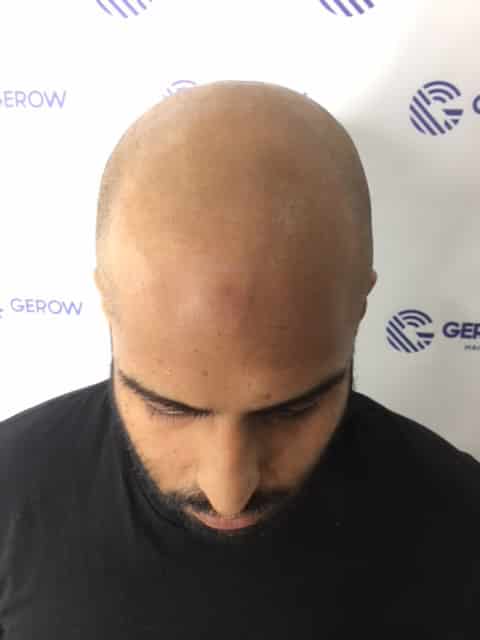There’s nothing like diving in at the deep end when it comes to subject matters. So here goes. Does Scalp Micropigmentation Work?
Thankfully, the simple answer to this question is yes. Otherwise, there would be a whole bunch of expensively trained practitioners who would be going out of business daily. And also another bunch of very unhappy people who would still unwittingly suffer to the cruel hands of hair loss.
However, the above leaves this article a little on the scant side. So let’s elaborate further by comparing the alternatives so that you get the full picture.
Scalp Micropigmentation
To begin with, let’s actually look at scalp micropigmentation as a treatment. It works by tiny microdots of natural pigment being implanted underneath the outer layer of your skin. This is carried out using a machine that has been fitted with a very fine needle. The microdots are implanted over several sessions and run in a series across the scalp to recreate a fully natural hairline. The result is a look that resembles that of the iconic buzz-cut in the case of classic pattern baldness or underlying shading for diffuse thinning which is commonplace with female hair loss.
Of course, SMP has a myriad of other uses in the fight against hair loss, such as traction alopecia and scar concealments but the predominant argument we are addressing here is, as a treatment, does SMP work? As previously established, we now know it categorically does. However, what wasn’t mentioned was the fact that it’s guaranteed to work. This is because it conceals the issue in hand, instead of trying to promote new hair growth like it’s close counterparts.
Topical Treatments
When it comes to hair loss solutions the list is pretty long. And probably the most common starting point for anyone who is experiencing any of the alopecias has to be topical and prescribed medication. Minoxidil, which is also known as Rogaine is an over-the-counter medication that is suitable for alopecia sufferers and comes in either liquid or foam form that is administered daily, across the scalp. The upside to Minoxidil is it’s extremely accessible, the downside, it can irritate the scalp and you’ll need to use it consistently over a substantial period.
Prescribed Medication to Promote Hair Growth
Alternatives to Minoxidil is Aldactone which is a prescribed drug, that promotes hair growth by addressing the hormones. This medication, which comes under the banner of spironolactone, works by decreasing testosterone production which in turn increases the desired growth of hair. The upside to this treatment is it’s prescribed, meaning it shouldn’t spectacularly dent the wallet. The downside is research has proven it to be not overly successful.
Light and Laser Therapy
Light and laser therapy is another option for stimulating hair growth which works by non-prescribed devices emitting light throughout the existing hair to encourage thickness and density. The idea is to apply the light therapy two to three times a week to see a visible difference over the course of several weeks, yet often longer. Again, the upside is accessibility, it’s not a prescribed hair loss solution. The downside is it’s not regulated and long-term safety is unknown.
Hair Transplants
And finally… the hair transplant, where groups or strips of hair are taken from zones where healthy hair can be found and then they are grafted onto the suffering sites. The upside, you regain your hair. The downside, it’s expensive and there are no guarantees it will work and can leave extremely visible scarring.
Conclusion…
So let’s again revert to the original question, does scalp micropigmentation work? Yes, of course it does. However, its also nice to know that it’s a holistic treatment that also provides the receiver with guaranteed results that are long-lasting, maintenance-free and also affordable. If you want to chat further about the upsides of scalp micropigmentation then you can reach out to me here at Scottsdale Head.

